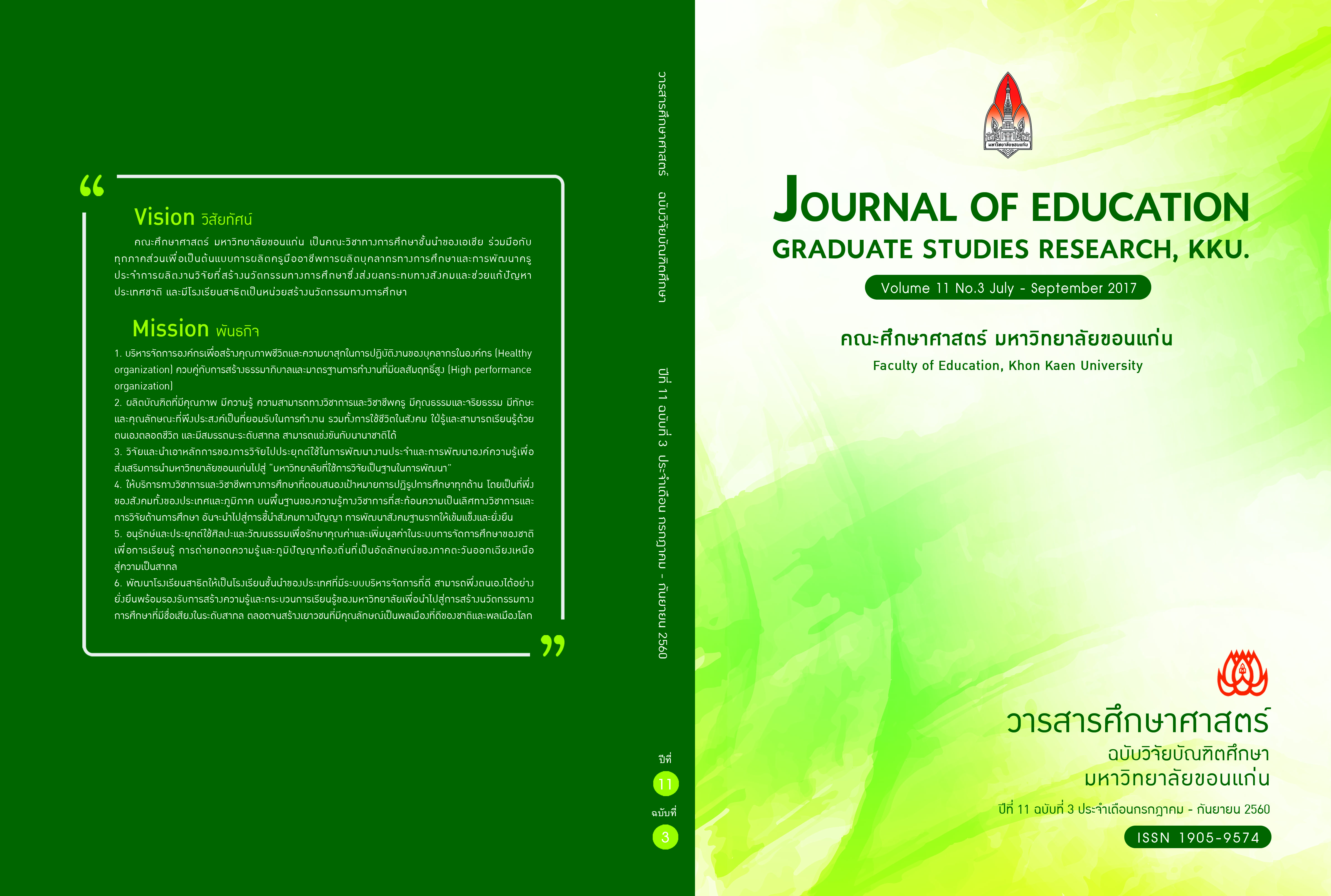The Development of Mathematics Learning Activities Emphasizing Analytical Thinking Used Underhill’s Instructional Model with Concept Map Techniques on Central Tendecy for Matthayomsuksa 3
Main Article Content
Abstract
The objectives of this action research were to: 1) develop mathematical learning activity, 2) develop learning achievement, and 3) study analytical thinking ability of students after learning through Underhill’s instructional model with concept map techniques on Central Tendency for Matthayomsuksa 3 students. Population of this research was 560 Matthayomsuksa 3 students from 12 classrooms at Kanlayanawat School in Muang district, Khon Kaen province, under the Secondary Educational Service Area Office 25, during the second semester of academic year 2015. Sampling group was selected using purposive sampling method which remained 48 students from Matthayomsuksa 3 class 10. Research instruments were divided into 3 categories included 1) experiment tool, 2) data collection tool and, and 3) tools for evaluating the effectiveness of students learning. Data analysis was made through mean, percentage, and essay summary. The findings revealed the development of mathematical learning activity emphasizing on analytical thinking using Underhill’s instructional
model with concept map techniques on Central Tendency for Matthayomsuksa 3 students which was divided into 3 steps. The first step is Introduction to the Lesson in which teacher activated students’ readiness by reviewing previous knowledge and informing them the learning objectives. The second
step is Learning Management divided into 3 sub-steps included: (1) creating cognitive conflict; student individually tried to understand the problem situation and proposed the answers by participating in learning activity emphasizing on analytical thinking through 5 steps of problem solving including;
determining what to be analyzed, determining the question, determining the principle or regulation, consideration and discrimination, and summarizing the answer, (2) reflective activity; each sub group of students presented proposed the possible answer using 5 steps of problem solving, (3) summary of
forming new cognitive structure; students jointly summarized idea, principle, and guideline of solving problem, as well as presented the summary in the form of concept map. The third step is measurement and evaluation in which students were trained through skill practice or exercise for applying knowledge
to different situations.
It also found that 89.58 percent of students could have average learning achievement scoreat 16.64 or 83.22 percent. Students could have average analytical thinking score at 82.50 percent. The average score of each step of problem solving were found at a high level included: determining what to be analyzed (89.58%), determining the question (85.41%), determining the principle or regulation (81.25%), consideration and discrimination (79.16%), and summarizing the answer (78.12%).

